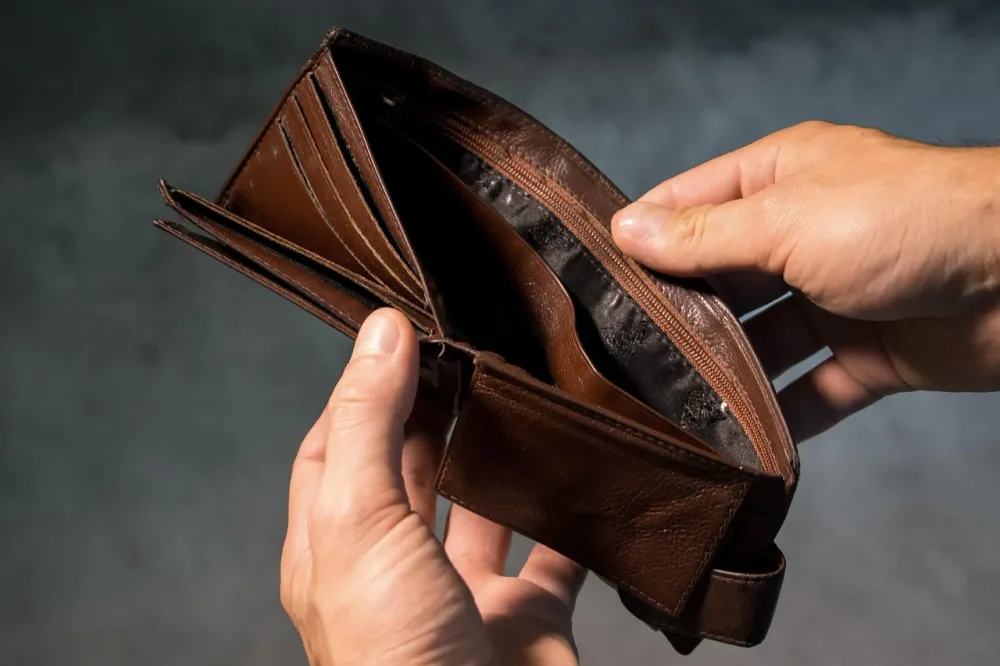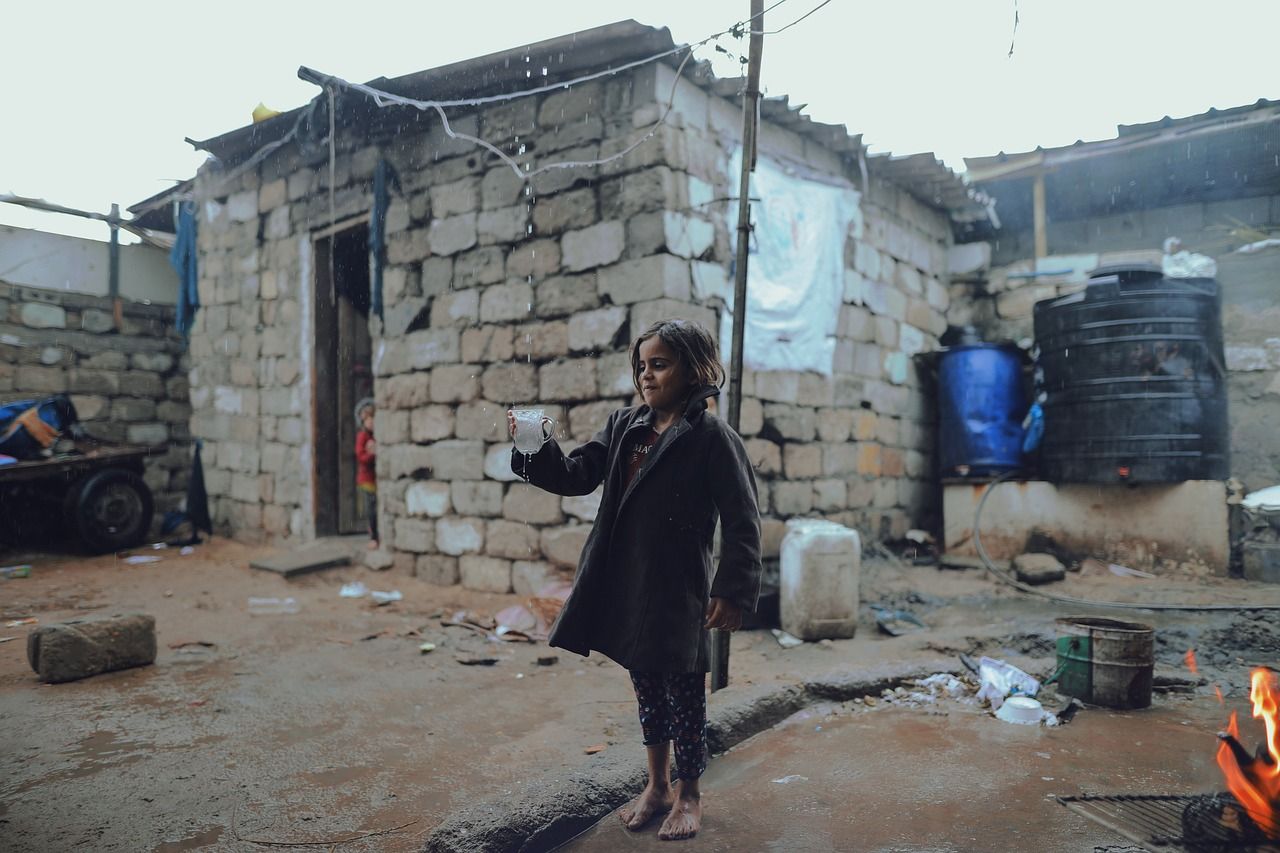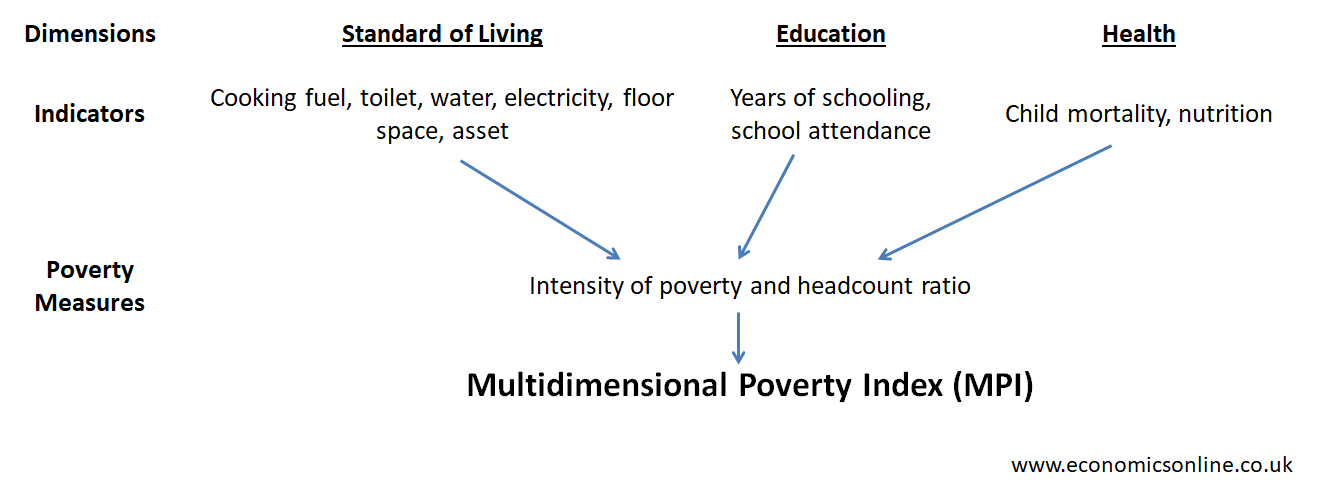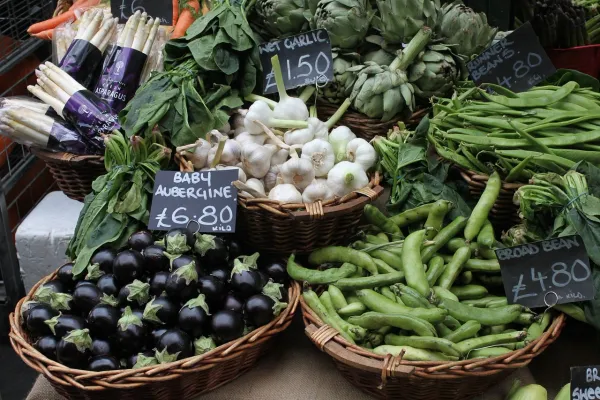
An image of the empty wallent showing poverty.
Relative Poverty
Introduction
Over 1 billion people in the world today live in poverty, out of a total population of about 8 billion. It makes up 12.5% of the world's population. It means 1 out of every 8 people lives in poverty. According to the World Bank, these poor people earn less than $2.15 per day. It means these people don’t have enough income or resources to meet their basic needs. Most of these poor people live in developing countries in Asia and Africa.
In this article, we will look at the global issue of poverty in detail.
What is Relative Poverty?
Relative poverty is a situation where people are poor in comparison to other people living in a country. It means that the income of poor people is not enough to enjoy the average standard of living in their country. The threshold for relative poverty is normally considered at 50% or 60% of median income.
What is Poverty?
In simple words, poverty is not having enough money or resources to meet basic needs. It also means living below the poverty line and the inability to access basic necessities of life. People in poverty don’t have access to the basic needs of food, clothing, shelter, health care, education, internet, water, electricity, and sanitation, leading to a low standard of living and a poor quality of life.

The Poverty Line
The poverty line or the absolute poverty line is the minimum amount of income below which people are considered poor. According to the World Bank, the poverty line is $2.15 per day. It means people earning less than the threshold $2.15 per day are considered poor.
People below the poverty line cannot afford to meet their basic survival needs, including food, clothing, shelter, healthcare, education, drinking water, and sanitation. This makes their well-being and standard of living very low.
Extreme Poverty
According to the United Nations, people earning less than $1.25 per day are in extreme poverty.
No poverty is the number one goal on the list of 17 Sustainable Development Goals (SDGs) according to the United Nations Envision 2030 in order to transform the world.
Relative Poverty vs. Absolute Poverty
Absolute poverty is the lack of income or resources to afford the basic necessities of life, including food, clothing, shelter, and water. Relative poverty is a situation when household income is less than a certain percentage in a country, typically 50% or 60% of the median income. While the criteria for absolute poverty remain constant with economic growth in a country, the criteria for relative poverty change with the country’s economic growth.
Primary Poverty vs. Secondary Poverty
Primary poverty means a shortage of resources to meet basic human needs. Secondary poverty means people earn just enough money, but that money is misspent on luxuries, which leads to less disposable income being left to be spent on necessities.
Persistent Poverty
Persistent poverty is a situation when people earn less than 60% of the median income for two out of three years. It menas the number of people who are considered poor will remain so for a longer time period. Persistent poverty is a long-term poverty and has more negative effects than short-term poverty.
The Vicious Circle of Poverty
It is a situation where people become trapped in the poverty cycle.
Once a person is in poverty, it becomes difficult for that person to get out of it due to the vicious circle of poverty. Poor people are likely to have less education and healthcare. This will reduce their productivity, employment opportunities, and income, and it will also influence the future prospects of their children. So, poor people are more likely to remain poor over a longer period of time due to the poverty cycle.
Measurement of Poverty: Multidimensional Poverty Index (MPI)
Over 1.2 billion people in 111 developing countries live in multidimensional poverty, accounting for 19% of the world’s population.
Historically, poverty has been measured and calculated based on a person's income. The new poverty measures consider that poverty is not just a lack of income or resources; it is a multidimensional phenomenon that includes many factors affecting people's quality of life. person's income
The multidimensional poverty index (MPI) is a measure of poverty which was developed in 2010 by the U.N. Development Program. The concept is that poverty is not about income only. Even if the income of people is above poverty line, they may not have access to clean drinking water, education, healthcare or sanitation. In this case, they are considered as multi-dimensionally poor.

Multidimensional Poverty Index (MPI) measures poverty by considering 10 key indicators which are divided into three categories (dimensions) of standard of living, education and health. Each category has a weight of one-third in calculating MPI.
Governments conduct household surveys in their countries to find the number of households who have not completed five years of schooling, are undernourished, and have no access to clean drinking water and electricity.
A household is considered as multi-dimensionally poor if it is experiencing deprivations in three or more of the ten indicators.
Indicators of Standard of Living
Cooking fuel, toilet, water, electricity, floor space, and assets: 33% weight
There are six indicators in the category of standard of living. These are cooking fuel, toilets, water, electricity, floor space (housing), and assets. Each indicator has a weight of 1/18.
The total weight of this category is 33% in calculating MPI.
Indicators of Education
Years of schooling and school attendance: 33% weight
There are two indicators in the education category: years of schooling and school attendance, each with a weight of 1/6. The total weight of this education category is 33% in calculating MPI.
Indicators of Health
Child mortality and nutrition: 33% weight
There are two indicators in the health category - child mortality and nutrition, each with a weight of 1/6. The total weight of this health category is 33% in calculating MPI.
Causes of Relative Poverty
There are many causes of poverty, including being unemployed, being in low-paid work, poor health, and growing old. Unequal access to education, labor market imperfections, discrimination, limited job opportunities, and social exclusion can also cause poverty by limiting individuals ability to improve their socioeconomic status. Moreover, high income inequalityies and the concentration of wealth in the hands of a few rich people are also the examples of relative poverty causes.
Consequences of Relative Poverty
High relative poverty rates have far-reaching consequences that can extend beyond financial hardship. These include:
Social Exclusion
Relative poverty can lead to social exclusion, where poor people are marginalised and denied access to opportunities and resources.
Health Disparities
Individuals living in relative poverty may face inadequate access to healthcare, leading to poor quality labour. Malnutrition, poor housing, and limited access to healthcare can contribute to higher rates of chronic diseases and reduced life expectancy.
Educational Challenges
People living in relative poverty have limited access to quality education, which limits their opportunities for personal and professional growth. This can perpetuate the cycle of poverty across generations.
Government Policies to Reduce Poverty
Governments should use comprehensive strategies for poverty alleviation. The choice of strategies depends on the tax revenue available to fund them. These measures may include:
Enhancing Education
Investing in education and ensuring equal access to quality schooling for all can be instrumental in breaking the cycle of poverty. Scholarships, vocational training programmes, and initiatives that address educational disparities can be used to empower individuals. In the long term, improving the quality of education can increase the job prospects and earning potential of the poor.
Economic Growth
Unemployment is a major cause of poverty. Unemployment and underemployment will not only decrease the living standards of the people, but they will also mean that the country is producing output below its potential GDP. The government can use demand-side or supply-side policies to promote economic growth in order to reduce the level of poverty.
Introducing or Raising National Minimum Wage
If low wages are causing poverty, then the government can introduce or raise the national minimum wage to increase the wages of low-paid workers.
Creating Job Opportunities
Governments should focus on promoting economic growth and economic development through the inclusion of the private sector. This can be achieved by fostering entrepreneurship, creating jobs, and providing support for small and medium-sized enterprises, particularly in underserved communities.
State Benefits
The elderly, sick, and disabled may be poor because they are not able to work and may not have enough savings to satisfy their basic needs. Giving these people state benefits, may enable them to avoid poverty.
Progressive Taxation
Governments can also use progressive taxation to reduce income inequality. This will redistribute income from the rish to the poor and might be a good tool for poverty reduction to some extent.
Conclusion
In conclusion, the concept of relative poverty highlights a major global issue faced by billions of people. By understanding the causes and consequences of relative poverty, governments can formulate comprehensive and effective strategies to improve the quality of life of people living in poverty.


